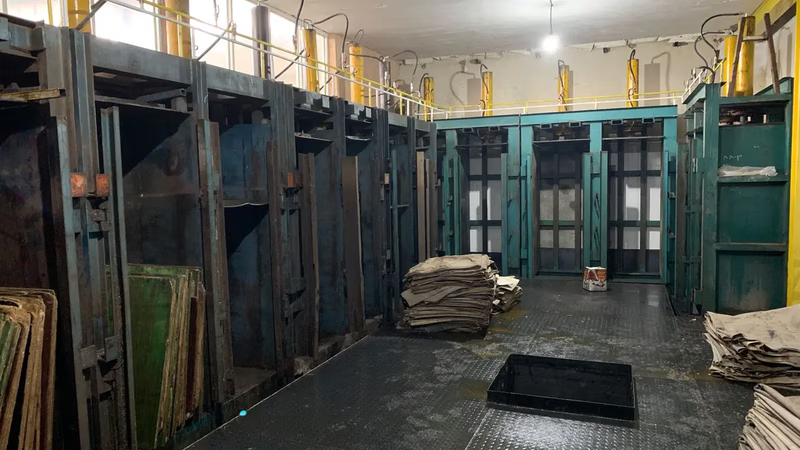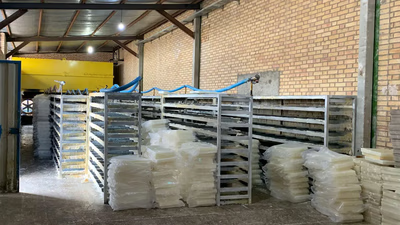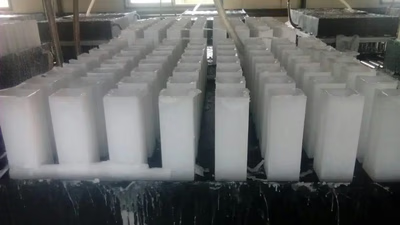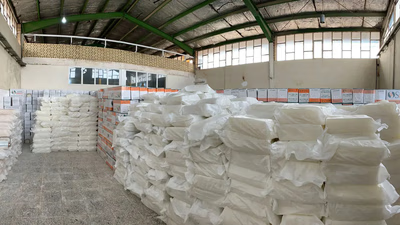
High-quality paraffin wax for various applications.
There are many things that can be considered in buying paraffin and first the use of paraffin should be determined because the quality of paraffin in each industry is determined by the use of paraffin in it, for example in the paraffin candle industry a lower percentage of oil is considered as higher quality, but this is the opposite in the lubrication industry. In general, whiter paraffin has a higher quality than milky and pale paraffins, and also having crystalline grains in the middle layers of paraffin can ensure us to provide high quality solid paraffin.
Good quality paraffin should have a high level of purity. It should be free from impurities, such as oil, sulfur, and other contaminants. Impurities can affect the performance and appearance of the wax. The melting point of paraffin wax is an important characteristic. High-quality paraffin should have a consistent and appropriate melting point range. This ensures that the wax melts evenly and provides consistent results in different applications. Good paraffin wax should have a clean and uniform appearance. It should be free from discoloration, specks, or foreign particles. Any variations in color or appearance may indicate impurities or poor processing.
Paraffin wax is typically odorless. If you detect strong or unpleasant odors, it might indicate the presence of contaminants or low-quality additives. The texture and consistency of paraffin wax should be smooth and homogeneous. It should not be excessively brittle, crumbly, or excessively soft. The wax should have a uniform structure and be easy to work with. Consider purchasing paraffin wax from reputable brands or suppliers known for their quality products. Established brands often have quality control measures in place to ensure consistent standards. Look for paraffin wax that has undergone testing and certification by recognized organizations or regulatory bodies. This can provide assurance of its quality and compliance with industry standards.
Check for customer feedback and reviews about the paraffin wax you are considering. Positive reviews and recommendations from users can indicate good quality. Different applications may have specific requirements for paraffin wax. For example, candle makers may look for paraffin with excellent scent throw and burn characteristics, while cosmetic manufacturers may prioritize hypoallergenic and skin-safe properties. Assess the suitability of the paraffin for your intended use. Good paraffin wax should have a high level of transparency and clarity. It should be free from cloudiness, haze, or visible impurities. Clear paraffin wax is desirable for applications where visual appearance is important, such as candle making or food coatings.
Paraffin wax should exhibit stability over time. It should not show signs of discoloration, degradation, or separation of components upon storage. Stable paraffin wax will maintain its properties and performance over an extended period. When paraffin wax burns, it should leave minimal residue or ash. High-quality paraffin wax tends to produce a clean and complete burn, leaving behind minimal residue. Excessive residue or ash can indicate impurities or poor combustion properties. Good paraffin wax should deliver consistent performance across different batches or lots. It should exhibit uniform melting characteristics, viscosity, and other relevant properties. Consistency in performance ensures predictable results in various applications.
Paraffin wax should be compatible with the materials and additives used in specific applications. For example, if you are using paraffin wax for blending with other waxes or additives in candle making, it should blend smoothly without causing separation or compatibility issues. Depending on the application, safety is a crucial aspect to consider. Ensure that the paraffin wax meets relevant safety standards and regulations, especially when using it in applications involving direct contact with the skin, food, or in environments where flammability is a concern. Choosing a reliable and reputable supplier is important for obtaining good quality paraffin wax. Look for suppliers with a track record of delivering consistent quality products and providing excellent customer service.
While price alone should not be the sole determinant of quality, it is worth considering the price in relation to the quality and performance of the paraffin wax. Assess the overall value proposition, balancing quality, performance, and cost. Familiarize yourself with industry standards and certifications relevant to paraffin wax. Examples include ASTM International standards or certifications from organizations like the International Organization for Standardization (ISO). Compliance with recognized standards and certifications can provide assurance of quality.
-

Paraffin wax is a versatile material with numerous applications across various industries. In candle making, it is favored for its clean burning properties and ability to retain scents. Additionally, it serves as a food-grade coating that enhances the appearance and shelf life of fruits and candies. In cosmetics, paraffin wax is used in products like lip balms and lotions to provide moisture and improve texture. Its utility extends to art projects, where it is employed in encaustic painting and mold-making. Paraffin wax also plays a crucial role in investment casting, providing precise patterns for metal castings. Furthermore, microcrystalline wax, a variant of paraffin, is utilized in adhesives and sealants due to its flexibility. The therapeutic benefits of paraffin wax are evident in spa treatments where it aids in heat therapy and skin moisturization.
Other industrial uses include serving as a lubricant, anti-mold agent, and waterproofing agent for fabrics. Its role in packaging materials enhances moisture resistance and sealing capabilities. Overall, paraffin wax"s diverse applications make it an essential component across multiple sectors. "
-

Paraffin is a group of waxy hydrocarbons derived from petroleum, primarily composed of long-chain alkanes. It exists in solid and liquid forms, with paraffin wax being the most recognized variant. Paraffin wax has a low melting point, making it ideal for applications such as candle production, skincare products, and food coatings. In the food industry, it enhances the appearance and shelf life of fruits and vegetables. Additionally, paraffin is used in packaging materials to improve moisture resistance. Beyond consumer products, paraffin plays a significant role in industrial processes including lubricants, electrical insulation, and manufacturing plastics and rubber products. It is also utilized in livestock feed to address digestive issues. The petrochemical industry extracts paraffin from oil or coal, classifying it into solid and liquid types based on application areas: food, industrial, and health. Its versatility extends across various sectors such as textiles, adhesives, cosmetics, and more.
-

The Middle East, rich in crude oil reserves, is a leading producer of paraffin wax, primarily derived from petroleum refining. Countries like Saudi Arabia, Iran, Iraq, Kuwait, and the UAE have established advanced refining infrastructures that enable efficient production of paraffin wax as a byproduct. The region"s vast resources ensure a steady supply of raw materials and allow for significant export capacities to meet global demand. The quality of paraffin wax varies based on refining techniques and feedstock composition, catering to diverse market needs. The competitive pricing and strategic geographical location of the Middle East facilitate easy transportation to international markets. This integration within the petroleum value chain enhances production efficiency and maximizes value from crude oil byproducts. As a result, the paraffin industry contributes significantly to foreign exchange earnings in the region while shaping global market dynamics through its substantial export volumes. "
-

Paraffin wax is available in various types, each tailored for specific applications across industries. Fully refined paraffin wax is the purest form, known for its high melting point and clarity, making it ideal for food coatings, cosmetics, and pharmaceuticals. Semi-refined paraffin wax retains some impurities and is used in products like crayons and rubber compounds. Microcrystalline wax offers flexibility and adhesion, suitable for adhesives and industrial coatings. Pattern wax is designed for investment casting, providing low melting points and dimensional stability for intricate designs. Container wax is formulated for container candles, ensuring good scent throw and burn performance. The market"s demand drives manufacturers to innovate and develop specialized formulations to meet diverse customer needs. Ongoing research enhances the properties of paraffin waxes, addressing challenges in niche applications while maintaining quality standards. "
-

Quality paraffin is determined by its intended use, with different industries requiring specific characteristics. For instance, in candle making, a lower oil percentage indicates higher quality, while lubrication applications may require the opposite. High-quality paraffin should be white, pure, and free from contaminants like oil and sulfur. It must have a consistent melting point for even performance and a clean appearance without discoloration or foreign particles. Odorless and smooth-textured paraffin is preferred, as strong odors may signal impurities. Reputable suppliers often ensure quality through testing and customer feedback is crucial for assessing product reliability. Transparency and stability over time are also key indicators of good paraffin wax. It should burn cleanly with minimal residue and maintain consistent performance across batches.
Compatibility with other materials is essential for specific applications, particularly in candle making or cosmetics. Safety standards must be met when using paraffin in direct contact with skin or food. Ultimately, choosing a reliable supplier who balances quality with cost is vital for obtaining high-quality paraffin wax.
-

Paraffin oil, discovered in the 19th century by Karl von Richen Bach, revolutionized the candle industry due to its cleaner and safer properties compared to traditional oils. The commercial production of paraffin wax began with Scottish chemist James Young, who developed extraction methods from crude oil. As demand for lighting increased during the industrial revolution, paraffin wax became a popular alternative to tallow candles and whale oil lamps. Advancements in refining processes, such as vacuum distillation and hydrocracking, improved the quality of paraffin wax. Today, it is primarily produced as a byproduct of petroleum refining through distillation and purification techniques. The applications of paraffin wax have expanded beyond lighting to include food preservation, molding, and casting. However, environmental concerns regarding petroleum-based products have led to interest in alternative wax sources like soy and palm waxes. The industry has also diversified with synthetic waxes that cater to specific needs across various sectors.






